Controversial opinion? Recorders rock! I know that many people make fun of the instrument, but I truly love teaching it. Yes, it sounds grating the first few days, but I love hearing my students make progress. And more importantly, the kids love learning the recorder. My number one goal is for my students to find joy in music; recorder is a win for me. But in order to go from squeaky to songful, I needed more time to work with individual students. This past year, I tried recorder centers, and I’m so glad I did. Today I’m sharing the different centers I’ve used, so that I can spend time pulling students for individual help or assessment.
PUZZLES
Students need practice identifying notes on the staff, and the fingerings for those notes. Matching up puzzle pieces is a great way to quietly work on these skills. I use these puzzles for my centers. Some puzzles are two-piece matching, and others have three pieces. My students don’t seem to notice that they’re practicing the same skill when they’re doing it in fun ways. They get excited to make a popsicle, egg, or hamburger at their center. When I make these, I print five copies of each puzzle so that several students can work at them at the same time.
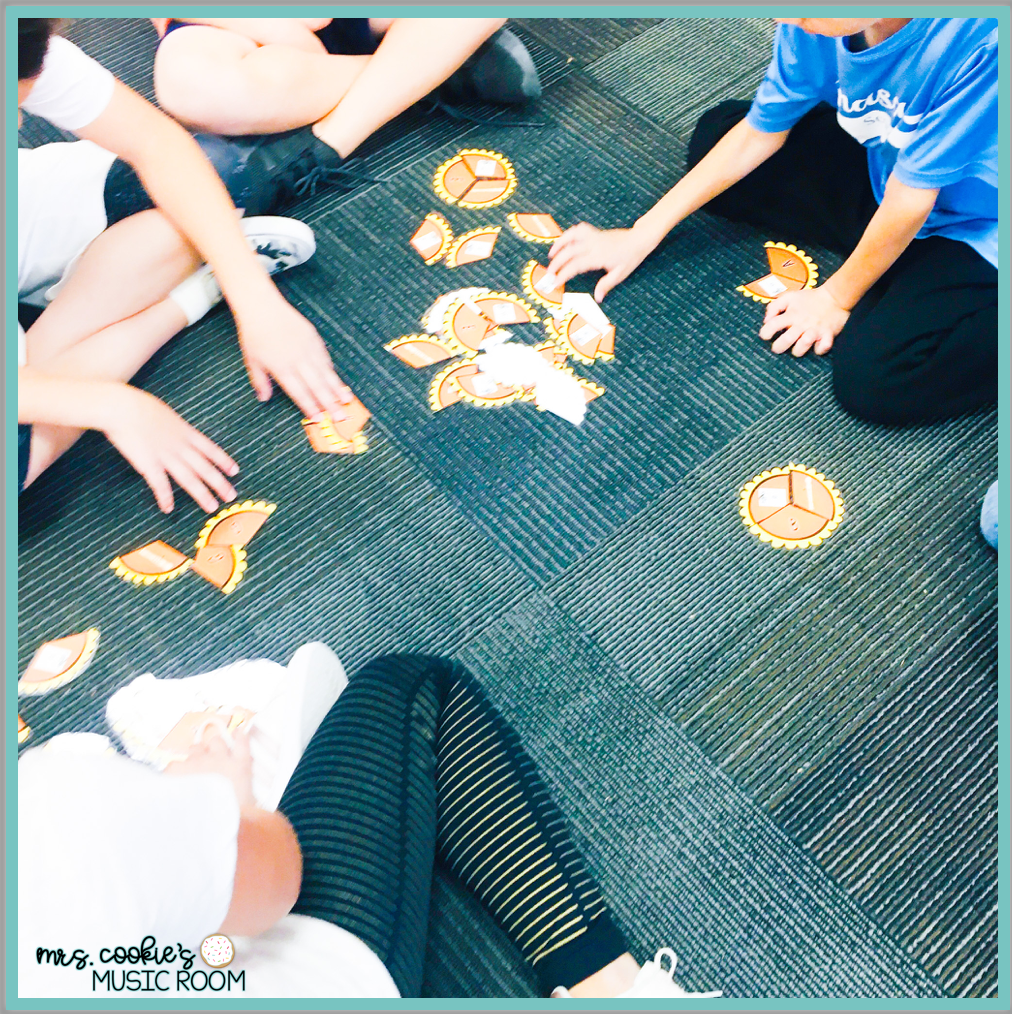
COMPOSING
Many of the resources I use for teaching recorder come from Jamie Parker. Her recorder sets come with great materials to use in centers, including composing worksheets. Students write an eight-beat rhythm with quarter notes and eighth notes, assign note names, then transfer it to the staff. Another manipulative students love to use for composing is composing dice. At Dollar Tree, they sell packs of foam blocks you can write note names on the sides of with permanent marker. Students roll the dice to find out which note they’ll put on the staff. Regardless of how they create their composition, they will want to hear it. Once their composition is complete, they can perform it for the others at their center on Boomwhackers or soprano xylophones.
FLASHCARDS
This center is simple. I have flashcards (from these sets) with different four-beat melodic patterns. On one side is stick notation with note names, and on the other side is the same pattern on the staff. Students can use whichever side they need to, and play the patterns on a xylophone. I recommend using soprano xylophones, since they are quieter. The first time I tried recorder centers, I made the mistake of using resonator bells. I know. What was I thinking?! They were SO LOUD. Now, I use soprano xylophones and soft yarn mallets. Much better.
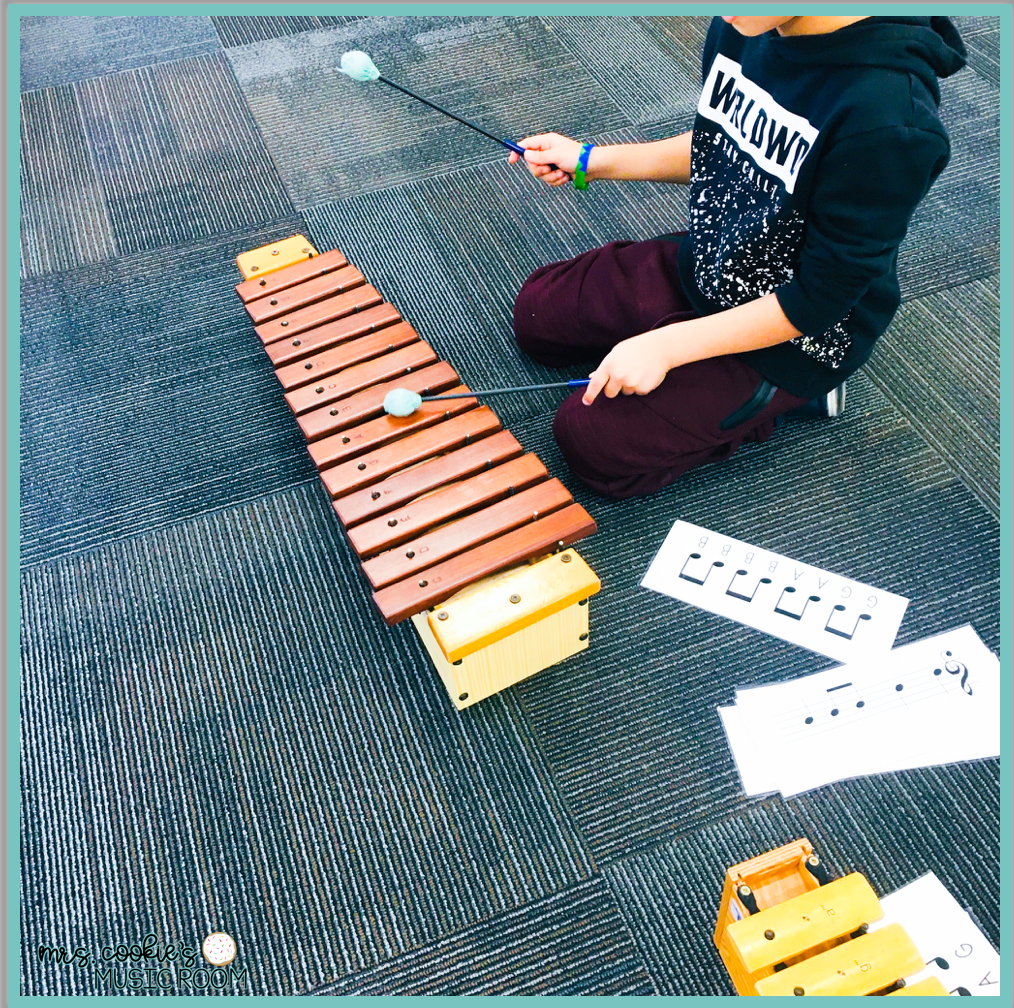
COLOR-BY-NOTE
Color-by-Note’s are one of my new favorite activities. I leave out copies, clipboards, and crayons (yay for accidental alliteration!), and the kids quietly color to practice their recorder notes and fingerings. I use my Recorder Color-By-Note Growing Bundle, which includes seasonal, holiday, and themes for any time of year. If I need another assessment opportunity for my students, I have them turn these in for a quick grade. Depending on my students’ progress, I might print different versions of these coloring sheets. Since the bundle includes fingerings, notes on the staff, and a mix of both, I print whatever I feel my students need more work with.
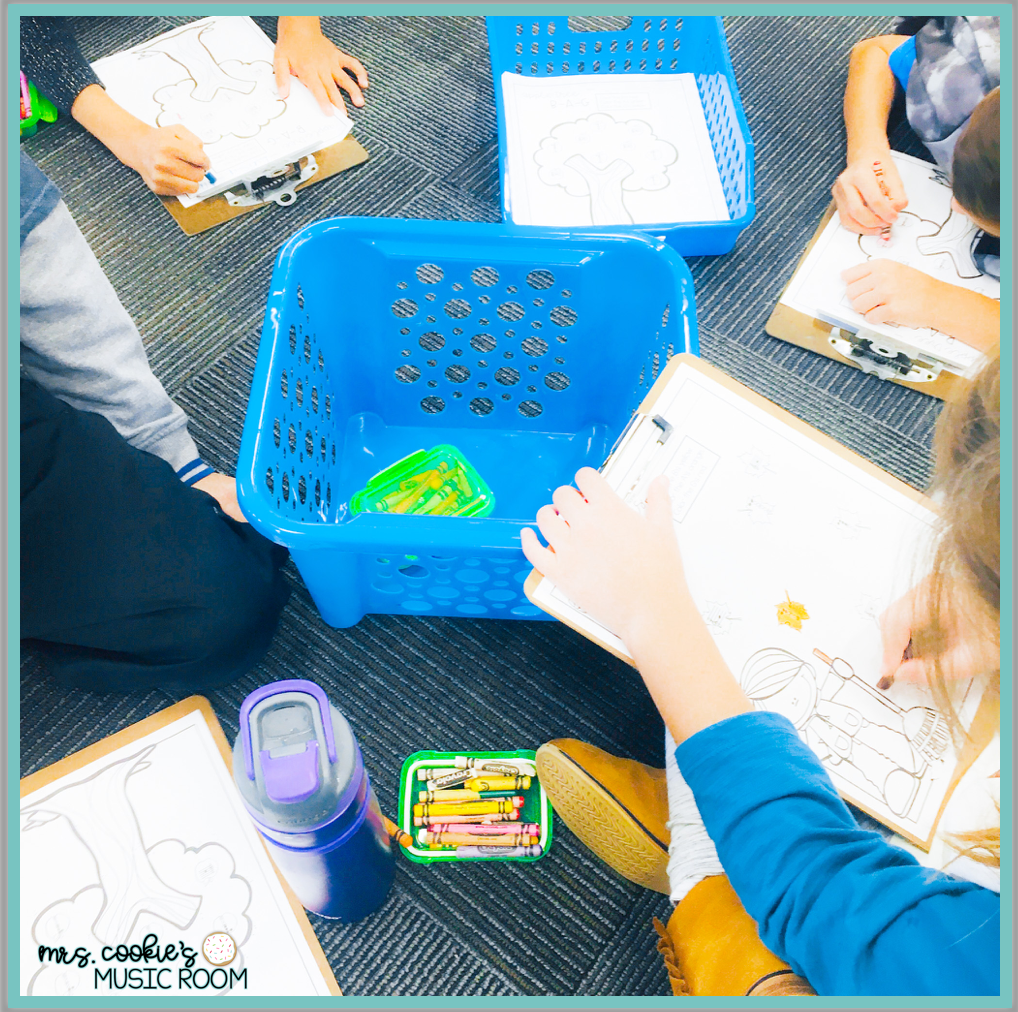
MEMORY! GAME
Memory! was one of my favorite games as a kid, so seeing my students enjoy a musical version makes my teacher heart happy. The last resource I’ll share from Jamie Parker is her Recorder Memory! card game. All of the cards go face down in rows. Students take turns flipping over two cards to look for two of the same note (note name, note on the staff, or one of each). If they find a match, they keep them. If they don’t match, the student flips the cards back over and the next player takes a turn. Whichever player ends with the most pairs wins.
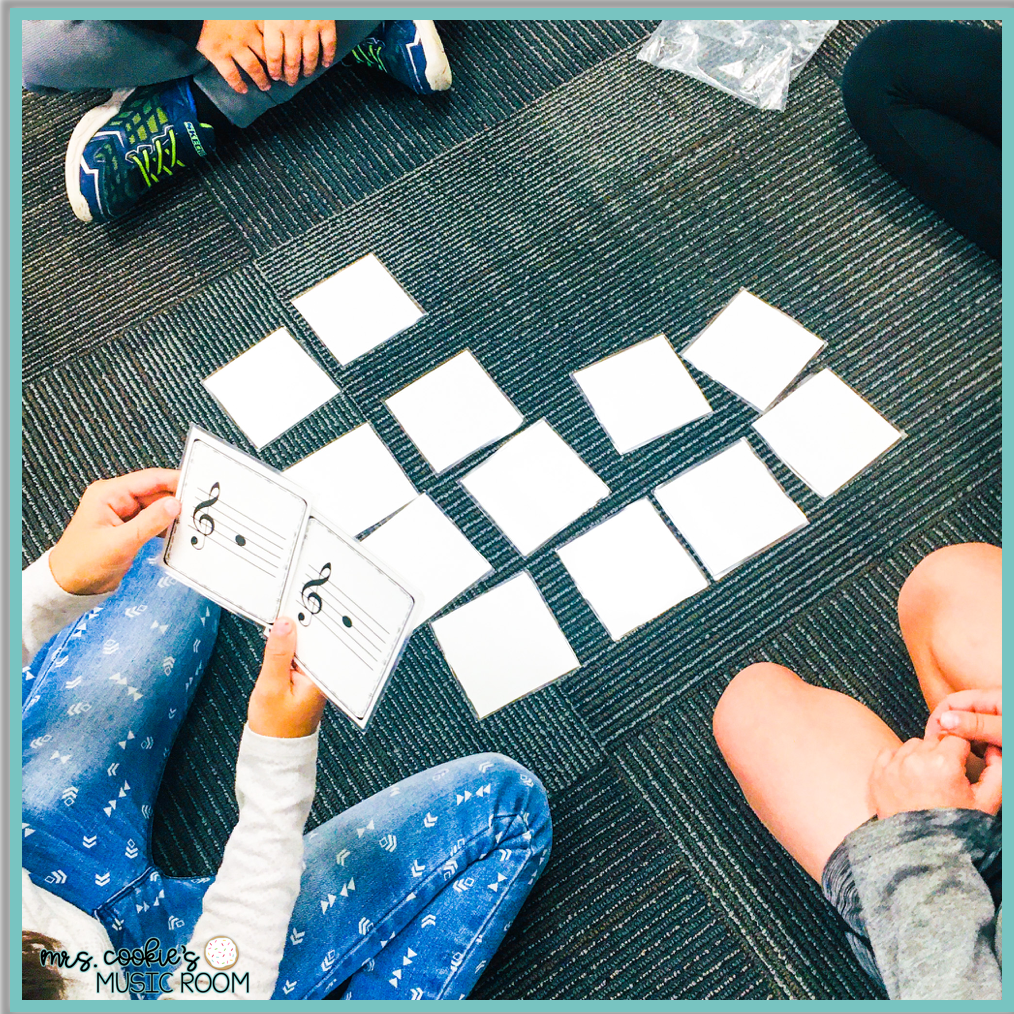
TEACHER TIME
Now for the most important center. I anchor myself at the front of the room with sheet music for songs we’ve been working on. I call students one by one to put their current center on pause, grab their recorder, and play for me. We try the songs first with regular sheet music, then with the note names written in, if necessary. Students know that my goal at this center is to help them with whatever they need, so we can work on finding any leaks, articulation, or anything else that comes up. After each student is done, I make a quick score for playing skills and another for music literacy. This teacher time has been so helpful in my teaching. Not only have I used it for pacing, but also I’ve found students who need extra supports or more challenges.
DETAILS AND LOGISTICS
Whenever I read about a new teaching idea, I wonder about the logistics of implementing it in my classroom, so here are some details. I see each class for 45 minutes, every three days, and we do centers every three or four weeks. When we do centers, it usually takes about two class periods to get through twenty-five students. For groups and rotating, I usually let students go at their own pace, but I give them a maximum number of kids for each center (usually six). Although I switch out the Color-By-Note pages and puzzles for the seasons, the centers and their procedures remain the same all year, so that students always know what to do. They love being able to go from center to center, working on their skills, and getting one-on-one help with me. Before incorporating recorder centers, it was difficult to meet the needs of all of my students. Now I can assess my kids’ skills and give them individualized help.
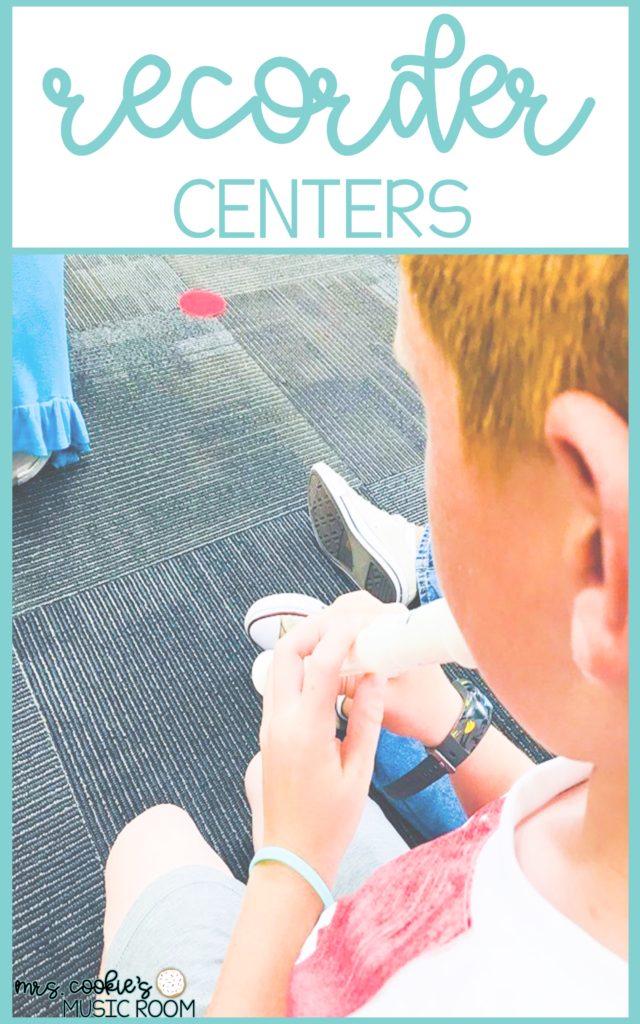

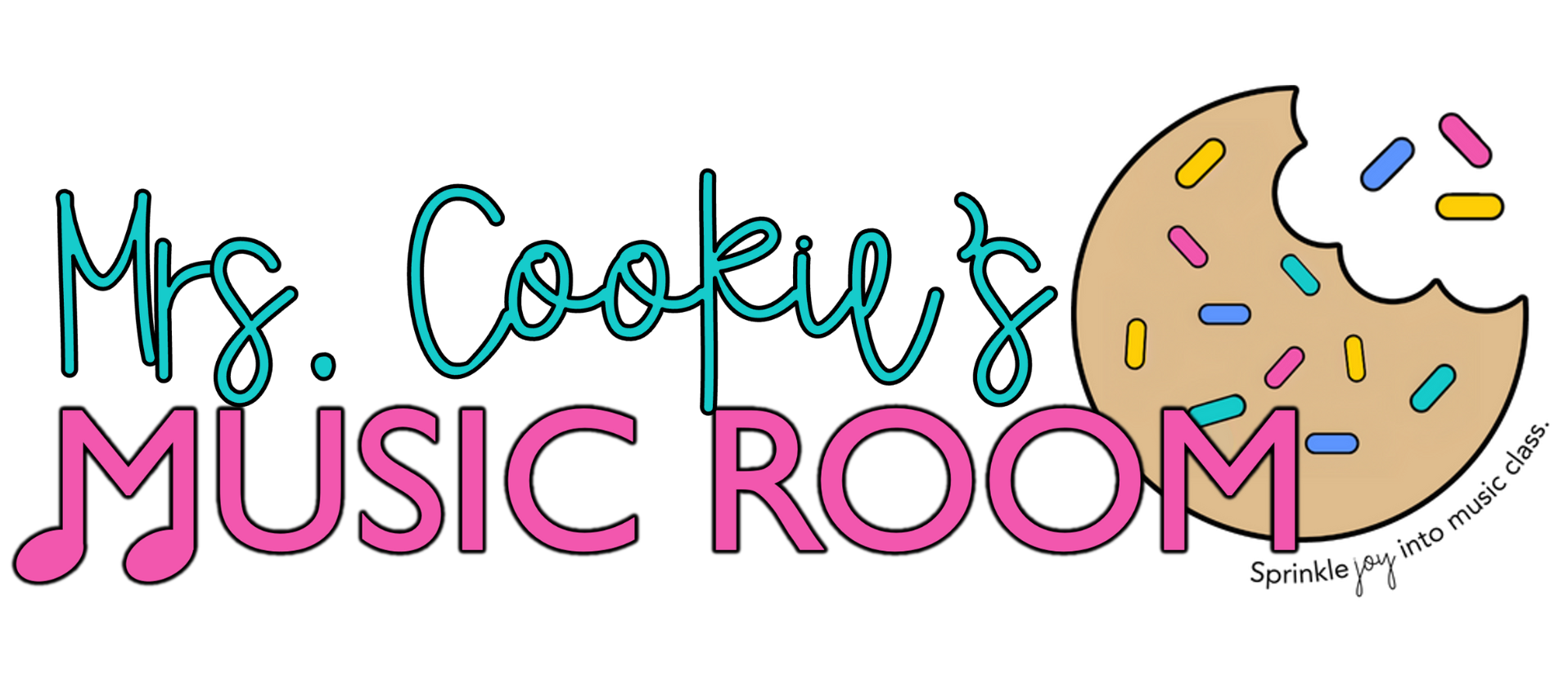

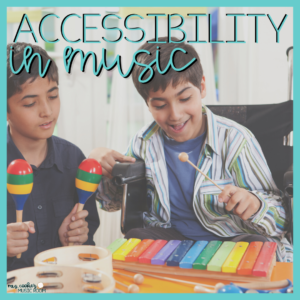
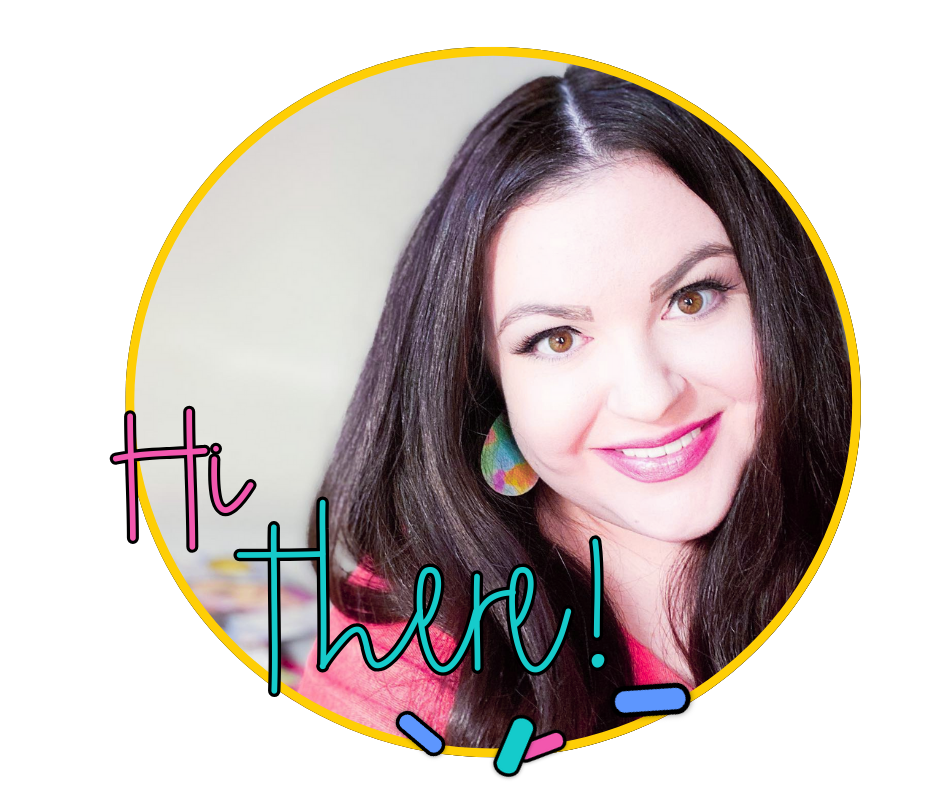
No Comments